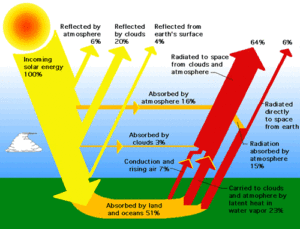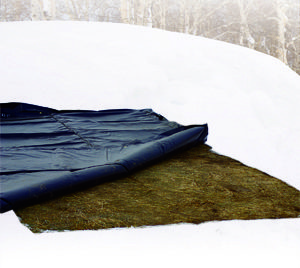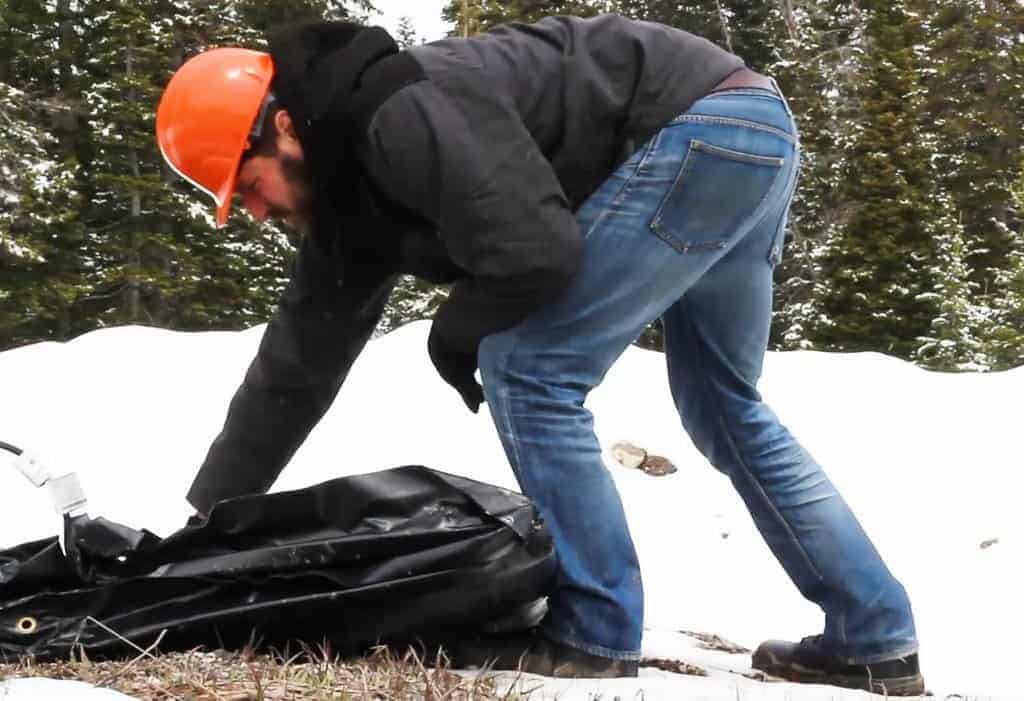How Deep Does the Ground Freeze in Winter?
Ground frost occurs when the ground contains water and the temperature of the ground goes below 0° C (32° F). More than half of all the land in the Northern Hemisphere freezes and thaws every year and is called seasonally frozen ground. One-fourth of the land in the Northern Hemisphere has an underground layer that stays frozen all year long. If the ground remains frozen for at least two years in a row, it is called permafrost.
What causes ground frost?
When the ground is frozen solid, the water between the rocks, soil, and pebbles, and even inside the rocks, has frozen and becomes pore ice. So, officially, the ground freezes when the water in the ground becomes ice.
Frost Depth
Frost Depth (or the frost line) is the deepest point to which groundwater will freeze. Frost depths vary depending upon the frost line in each location and can have a great impact on many construction practices. For example, any crews digging to access utility lines or preparing the ground for a concrete pour will need to be aware of their local frost depth.
When groundwater freezes, its volume expands by 9%. For this reason, pressure-sensitive structures, such as water and sewer lines, need to be buried below the frost depth to avoid ruptures. When water turns into ice, it can expand with great force and cause the ground to swell. In areas with a cold winter season, ground frost can damage roads. For example, water turning to ice under roads sometimes creates frost heave. The expanding ice pushes up the road and creates a hump, which later, after a thaw, will create potholes and sunken sections in a roadway.
The frost line varies depending on the length of time the air is cold. The longer the cold period, the deeper the ground will freeze. However, the depth of frozen ground is limited because Earth is warm deep inside.
Our rugged, portable heated blankets allow you to thaw ground faster and more efficiently than alternative methods. You can shave hours or days off your projects by directing safe, even heat into the frozen ground. Our thawing blankets feature reinforced corners for durability and are built to withstand the harshest environments. With multiple sizes and wattage options, we have a frost solution tailored specifically for you.
What Affects the Frost Line?
Most of Earth’s heat comes from the Sun (Figure 1). The ground stores a lot of the Sun’s heat and reflects the rest into the air. Snow and ice are light-colored and reflect more heat away. Ocean water and bare ground reflect less heat, instead absorbing it. This transfer of heat between the ground and the air is called the surface energy flux.
Figure 1. This diagram shows how the Earth’s atmosphere and the ground reflect and absorb the Sun’s energy.
—Credit: NASA Atmospheric Science Data Center
Heat also comes from the inside of the Earth. The Earth’s core is very hot, and its heat moves towards the surface. Heat from volcanoes, rivers, lakes, and other sources can also spread through the ground. This heat keeps some areas unfrozen, even though surface temperatures are low.
In general, deeper permafrost is very old. One researcher found that the deepest part of the permafrost underneath Prudhoe Bay, Alaska, is more than 500,000 years old.
The Temperature Gradient
When the temperature of the ground drops below 0° C (32° F), it freezes; however, the ground temperature can be different from the temperature of the air above it. This temperature gradient means that layers deep within the ground may be colder or warmer than layers near the surface.
The top layer of ground may respond to conditions on the surface, but the layers below may not change as quickly. On a warm summer day, the surface of the ground absorbs heat and becomes hotter than the air. But the temperature a few feet underground may be much lower than the air. It is the opposite in the winter; the surface of the ground cools, but the layer deep underground may stay warmer than the surface. The upper layer of the ground stops heat from moving between the cold air and the deeper layers of the ground, insulating itself.
How does the local landscape affect ground frost?
Ground frost is affected by more than just temperature swings, seasonal changes, and location. Snow, soil, plants, and other aspects of the local landscape also affect frozen ground.
Snow
A thick layer of snow acts like a blanket so that heat does not leave the ground. Only a thin layer of ground will freeze under a thick layer of snow.
Soil type
Some soils freeze more easily than others. Light-colored soils freeze sooner and stay frozen longer than dark soils. Light-colored soils and rocks reflect sunlight, keeping the ground cooler. Loose soils like sand have more space for water and ice forms more easily. Dense soils with small particles do not have as much space for water. Clay, for example, does not freeze as easily as sand.
Peat
Peat forms when dead plants do not fully decompose. The ground under peat is usually colder than ground not covered by a peat layer. In the winter, peat freezes and allows heat to leave the ground. Because the heat escapes, more frozen ground and permafrost form.
Plants
In the summer, plants keep the soil underneath them cooler because they block some sunlight from reaching the ground. Evergreen trees especially keep the ground cooler. Evergreen trees do not lose their leaves in the winter. This means that the trees block sunlight from warming the ground. Plus, their branches block snow from reaching the ground underneath. The bare ground loses heat more easily. Permafrost often forms under evergreen trees.
Slopes
Hillsides and mountain slopes can affect frozen ground and permafrost. If a slope gets more sunlight because of the way it faces, the ground will be warmer and will be less likely to freeze. In the Northern Hemisphere, slopes that face south, towards the Sun, get more sunlight than shady slopes that face north. The opposite is true in the Southern Hemisphere.
Steep slopes are likely to contain frozen ground. The steepness of the slope affects how much sunlight it gets. Steep slopes do not get as much direct sunlight, so they are colder. Steep slopes do not hold snow cover very well, so the bare ground loses more heat. Wind direction also affects whether frozen ground forms. If a slope faces into the wind, the ground will lose more heat. Plus, the wind will blow snow away, making the ground even colder.
Lakes and rivers
Lakes and rivers are sources of heat in cold places. The water is warmer than the surrounding air and can keep the ground beneath it warmer in the winter. Lakes and rivers might not have frozen ground under them. Or, they might have a thicker active layer compared to nearby land.
Powerblanket Ground Frost Solutions
“Your blankets are absolutely excellent. Thanks to the Powerblankets, we were able to quickly thaw the ground and complete our job. In fact, we estimate a savings of 10 hours per site equaling a savings of $5,000 already. Calculating this to our thousands of sites, the savings is huge! We are excited about the time and money Powerblanket has saved us and look forward to future savings.”
— Kim Herman OSP/COEI Operations Manager Precision Utilities Group
The frost line is a reality many industrial companies must face. The high watt density in Powerblanket ground thawing products helps tackle the difficulty of thawing ground in harsh climates. Use a Powerblanket ground heater to save time, money, and stress.
Time is money. Don't waste time waiting for the ground to thaw. Powerblanket has you covered.









